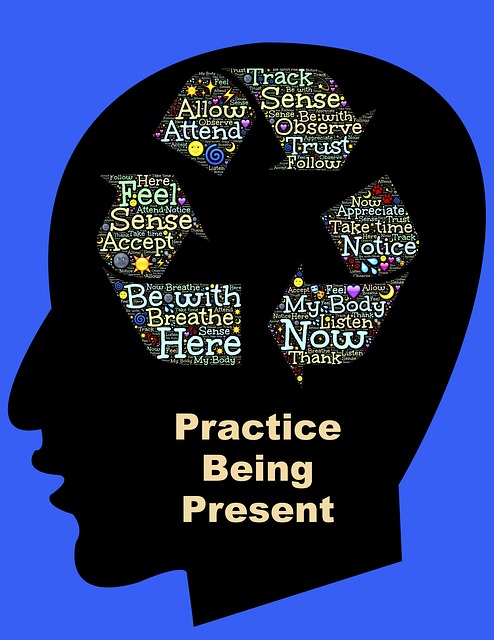I am the mother to a Type A student, a very Type A student. You all know the kind; she cried at every 89%, attended every school function then studied all night, and took every Honors, AP, Dual Enrollment class possible, even if it meant taking it online. She applied to too many colleges, spent too much time stressed, and missed out on so much fun. And part of it was my fault. I, like many tiger moms or helicopter parents pushed her – really pushed her. I share this because I regret the anxiety I pushed on to her.
And then strangely, she pushed back. She pushed back by choosing the path of incorporating mindfulness and integrative health into her study of kinesiology in college. She has been able to identify how stress negatively affected her learning and her well being. We were having lunch a few weeks ago when she gave me a brief description of “walk meditating.” This was from a student who spent most of high school living out of her car, so she could almost be on time to all the events she over-scheduled herself for. Although still focused on doing well and very involved in school, she was able to take power back over all the “excessive stuff” in her life.
I called her the other day, after I had a very stressful day at work. I asked her to tell me five things that would help me be more mindful. I had been feeling not very present and distracted by all the many things that pulled me in opposite directions. It was making me irritable and frankly, not very happy. This is what she texted me (side note, it took her an extremely long time to text me back: the girl is no longer governed by her iPhone).
1) We naturally are lost in thought 47% of the day. When you aren’t living mindfully (living in the present moment) we are putting ourselves at risk to become either depressed or anxious.
2) This happens because when the brain is reliving a moment in the past (ruminating) we tend to be far too critical of ourselves and this can lead to depression. When we do the opposite and constantly worry about the future (projection) we cause ourselves to become anxious.
3) An easy way to pull back from either ruminating or projecting is to notice things around us (i.e. take note of 3 round objects or 2 things that are green etc).
4) Being mindful isn’t about ignoring negative emotions and pretending they don’t exist. It’s about acknowledging those hard emotions and instead of mindlessly reacting to them, mindfully deciding how to handle the situation.
5) An easy way to calm our nervous system and turn back on our parasympathetic nervous system is to do the 4-7-8 breath (breathe in for 4, hold for 7, breathe out for 8).
And there it was from an 18 year old, one who had spent pretty much her whole teenaged life ruminating or projecting, letting me know how to be present. In the short time she has committed to her exploration of mindfulness, she has reported to be happier and get better grades. She has called me upset way less (I do miss the phone calls).
Through technological advances, we know how the human brain works. Neuroscientists have been able to see that mindful practices and meditation support the development of gray matter and memory centers, it can decrease area in the amygdala, the area that governs fear and stress, and it can improve attention and concentration. We know that mindful practices are helpful for our students and that their cell phones are making them lonelier and their over-scheduled lives are not good for them.
Many schools, including the high school where I work and my daughter attended incorporate mindfulness into the day. But knowing what we know about increasing numbers of students who are struggling with depression or considering suicide, it is time to take a serious look at the science and make mindful practice a core part of what we do, not just an extra for some kids. Whether it is for our highest achieving, overbooked kids, our kids who are struggling in their homes or with behavior issues, our kids who are reporting feeling alone and without connections, or even our staff, schools should design times and spaces for mindful practice to support all.
Thank you to my daughter for really showing me what I knew, but did not act on. And kudos to ASU for having a space for students to practice and learn about mindfulness in their lives. We should all follow suit.










Comments 5
Wow! Forty seven percent of the day! That hit home. This is a really important blog that provide immediate opportunity for change. Thanks to you and the young, wise one.
I’m glad to know I am not the only one reading the latest research on cell phone usage and students. I think that students are not being taught how to find the balance and this a systemic problem that we are not addressing. I loved this article would love to talk to you more about this topic at some point.
I am seeing fewer teachers use phones for student engagement in class. It is an interesting change.
Excellent points, Jaime. Thanks. In teaching, there is rarely a conversation that I have that I haven’t had before with a student and it’s easy to “run the recording” and not be present. When I do take a moment and focus on this conversation with this student everything is better – the student responds more positively and I’m more patient and helpful. In addition to the calming breath, I often do the STOP meditation: Smile, Touch the floor (get grounded), Take one breath, and be present. It takes less than a minute and defuses a lot of tension before an encounter that might be unpleasant.
Great post, Jaime. 47% of the day lost in thought – that is something to be aware of! I’m a big fan of the 4-7-8 breath and use it with my students. I love that there is hope for even Type A’s through mindfulness. It’s amazing what our children can teach us, isn’t it?